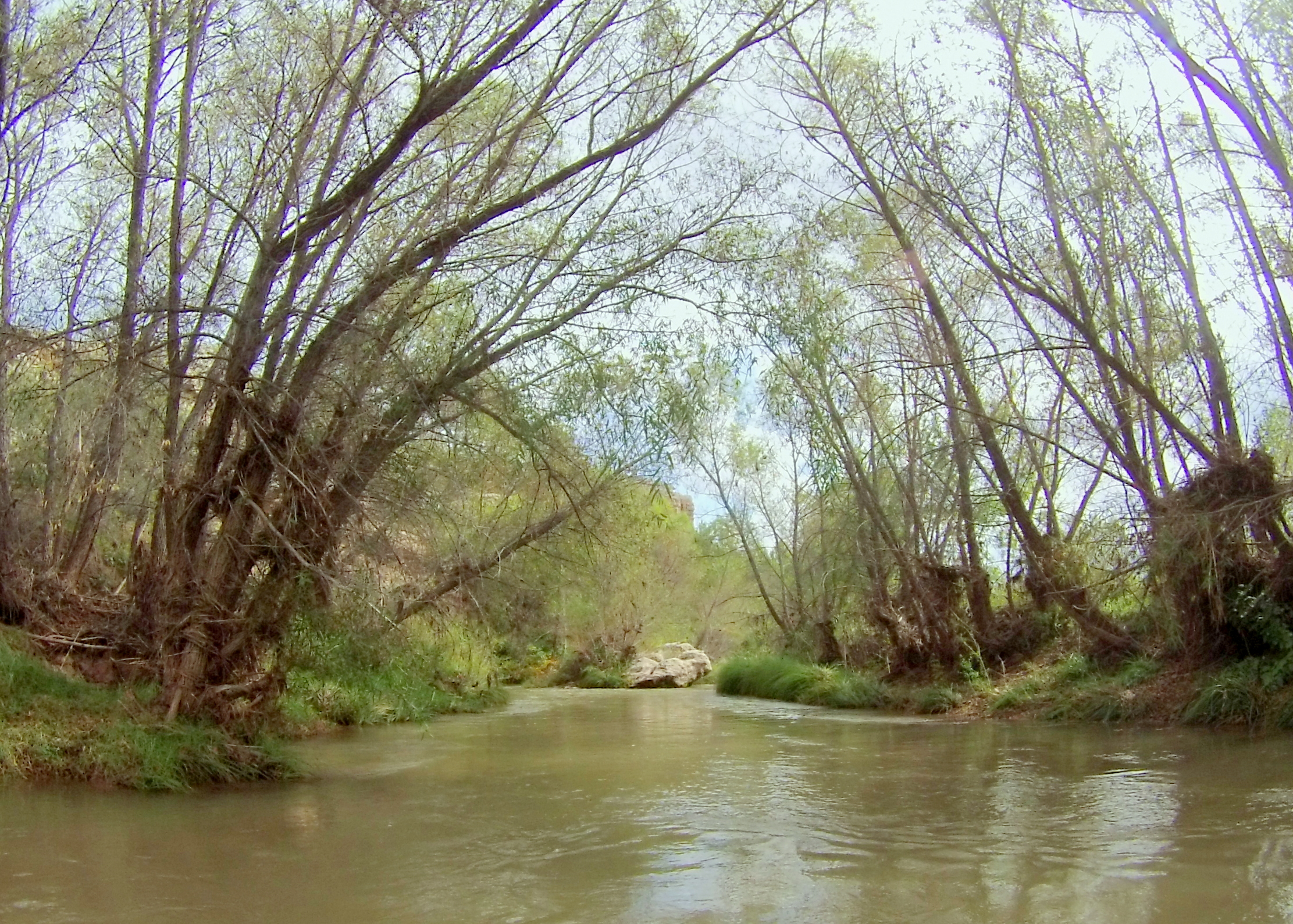Learn
by Nancy Steele
July 13, 2021
Trees are on my mind. This year, I’ve seen landscape trees and shrubs stressed and brown. Junipers in central and northern Arizona are dying in large numbers. The die off has been called unprecedented. Scientists believe it is caused by the combination of drought and extreme heat. These trees just can’t keep up when they are hit with both high heat and not enough water.
I don’t know about you but seeing a tree die makes me sad. There is something about a tree that uplifts my spirit. People enjoy walking through forests. Being in a dense urban city is more pleasant when there are street trees. There is a strong connection between humans and trees. Even (or especially) in deserts, we gravitate towards trees.
It’s no wonder people are refreshed by the sight of trees. Trees are a sign of wonder. A line of trees in an arid landscape means there is water, either flowing on the surface or just underground, within reach of thirsty roots. Leaves don’t just photosynthesize; they also capture raindrops and slow down runoff, ensuring water stays near the root zone. Incidentally, this also reduces erosion and flooding. Along riverbanks, trees shade the water, keeping rivers cool for aquatic (e.g., fish) and river-loving (e.g., otters) animals.
In the Verde Valley, we enjoy iconic Fremont cottonwoods, Arizona sycamores, mesquite, desert willows, maples, junipers, netleaf hackberry, and more. Some of these only live near water and others grow throughout the Valley. Each tree has a unique niche.
But don’t we live in a desert? Shouldn’t we cut down these water-hogging trees? No. Trees have more benefits than negatives in arid landscapes. Besides, the Verde Valley is not in a desert.
The Verde Valley is in a region called the Central Arizona Highlands, between the Colorado Plateau to the north and the Sonoran Desert to the south. We have a variety of microclimates, ranging from the cooler, moister areas near the rivers that nurture cottonwoods, willows, and other trees, to the dry, shrublands and grassland areas that you see on the way to Jerome and in Chino Valley.
A quick Google search will tell you that the average rainfall in Cottonwood is 14 inches, whereas Sedona’s average rainfall is 23 inches. It might surprise you to find out, for comparison, that the average rainfall in Los Angeles is almost 15 inches and Denver’s annual average is about 14 inches. Who knew that Sedona was wetter than Los Angeles and Denver? Phoenix, in a true desert, averages about 9 inches of rain.
When you think of our climate and ecology, the area the Verde River runs through is harder to categorize. Arizona’s Natural History Institute has given this region its own name. The Mogollon Highlands Ecoregion is an “area of impressive elevational gradients, where numerous biotic communities intersect at a continental-scale biogeographic crossroads…” In other words, it’s complicated! But you can’t call the Verde watershed a desert and cacti are not the best or only landscaping choice.
Thus, there are many reasons for landscaping with trees. Trees that are native to our region provide food and shelter to songbirds and other native animals, and they thrive in our arid landscape. Jeff Schalau, who has written the Backyard Gardener blog for many years, recommends some favorite native trees, including Arizona ash, Arizona cypress, Arizona sycamore, desert willow, netleaf hackberry, and velvet mesquite.
Wherever you live, avoid any of the invasive non-native trees and plants that Friends of the Verde River spends so much time and energy removing from the riverside: tree of heaven, salt cedar or tamarisk, Russian olive, and giant reed (Arundo). These plants crowd out the native willows and cottonwoods, increase river water temperatures, cause streambank erosion, and provide little or no food and shelter for local birds and other animals. Tamarisk trees and giant reed, in addition, are highly flammable. If you need information on how to remove these plants, give us a call.
Trees have so many benefits. They shade the land, rivers, and our houses, lowering the air temperature inside and out. Trees give shelter and food. There is even evidence that a healthy riverside landscape with native trees is protected against fire.
On this 110o day, as I write, birds are flitting in and out of the trees in my yard, looking for bugs or seeds to eat and getting a bit of relief from the heat. A recent New York Times article asks, “What Technology Could Reduce Heat Deaths?” The answer is trees. We need trees and they need us.
If you want to help with restoring the land for a healthy, flowing Verde River system, sign up on our website, https://verderiver.org, to volunteer or donate. You’ll get emails about volunteer days, and I hope you’ll join us. Keep cool and enjoy trees!






